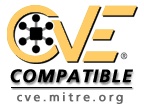Summary
| Detail | |||
|---|---|---|---|
| Vendor | Open-Xchange | First view | 2018-06-15 |
| Product | Open-Xchange Appsuite | Last view | 2024-02-12 |
| Version | 7.8.3 | Type | Application |
| Update | rev40 | ||
| Edition | * | ||
| Language | * | ||
| Sofware Edition | * | ||
| Target Software | * | ||
| Target Hardware | * | ||
| Other | * | ||
| CPE Product | cpe:2.3:a:open-xchange:open-xchange_appsuite | ||
Activity : Overall
Related : CVE
| Date | Alert | Description | |
|---|---|---|---|
| 5.4 | 2024-02-12 | CVE-2023-41708 | References to the "app loader" functionality could contain redirects to unexpected locations. Attackers could forge app references that bypass existing safeguards to inject malicious script code. Please deploy the provided updates and patch releases. References to apps are now controlled more strict to avoid relative references. No publicly available exploits are known. |
| 6.5 | 2024-02-12 | CVE-2023-41707 | Processing of user-defined mail search expressions is not limited. Availability of OX App Suite could be reduced due to high processing load. Please deploy the provided updates and patch releases. Processing time of mail search expressions now gets monitored, and the related request is terminated if a resource threshold is reached. |
| 6.5 | 2024-02-12 | CVE-2023-41706 | Processing time of drive search expressions now gets monitored, and the related request is terminated if a resource threshold is reached. Availability of OX App Suite could be reduced due to high processing load. Please deploy the provided updates and patch releases. Processing of user-defined drive search expressions is not limited No publicly available exploits are known. |
| 6.5 | 2024-02-12 | CVE-2023-41705 | Processing of user-defined DAV user-agent strings is not limited. Availability of OX App Suite could be reduced due to high processing load. Please deploy the provided updates and patch releases. Processing time of DAV user-agents now gets monitored, and the related request is terminated if a resource threshold is reached. No publicly available exploits are known. |
| 6.1 | 2024-02-12 | CVE-2023-41704 | Processing of CID references at E-Mail can be abused to inject malicious script code that passes the sanitization engine. Malicious script code could be injected to a users sessions when interacting with E-Mails. Please deploy the provided updates and patch releases. CID handing has been improved and resulting content is checked for malicious content. No publicly available exploits are known. |
| 6.1 | 2024-02-12 | CVE-2023-41703 | User ID references at mentions in document comments were not correctly sanitized. Script code could be injected to a users session when working with a malicious document. Please deploy the provided updates and patch releases. User-defined content like comments and mentions are now filtered to avoid potentially malicious content. No publicly available exploits are known. |
| 7.3 | 2023-11-02 | CVE-2023-29047 | Imageconverter API endpoints provided methods that were not sufficiently validating and sanitizing client input, allowing to inject arbitrary SQL statements. An attacker with access to the adjacent network and potentially API credentials, could read and modify database content which is accessible to the imageconverter SQL user account. None No publicly available exploits are known. |
| 4.3 | 2023-11-02 | CVE-2023-29046 | Connections to external data sources, like e-mail autoconfiguration, were not terminated in case they hit a timeout, instead those connections were logged. Some connections use user-controlled endpoints, which could be malicious and attempt to keep the connection open for an extended period of time. As a result users were able to trigger large amount of egress network connections, possibly exhausting network pool resources and lock up legitimate requests. A new mechanism has been introduced to cancel external connections that might access user-controlled endpoints. No publicly available exploits are known. |
| 5.4 | 2023-11-02 | CVE-2023-29045 | Documents operations, in this case "drawing", could be manipulated to contain invalid data types, possibly script code. Script code could be injected to an operation that would be executed for users that are actively collaborating on the same document. Operation data exchanged between collaborating parties does now gets checked for validity to avoid code execution. No publicly available exploits are known. |
| 5.4 | 2023-11-02 | CVE-2023-29044 | Documents operations could be manipulated to contain invalid data types, possibly script code. Script code could be injected to an operation that would be executed for users that are actively collaborating on the same document. Operation data exchanged between collaborating parties does now get escaped to avoid code execution. No publicly available exploits are known. |
| 6.1 | 2023-11-02 | CVE-2023-29043 | Presentations may contain references to images, which are user-controlled, and could include malicious script code that is being processed when editing a document. Script code embedded in malicious documents could be executed in the context of the user editing the document when performing certain actions, like copying content. The relevant attribute does now get encoded to avoid the possibility of executing script code. No publicly available exploits are known. |
| 7.8 | 2023-11-02 | CVE-2023-26455 | RMI was not requiring authentication when calling ChronosRMIService:setEventOrganizer. Attackers with local or adjacent network access could abuse the RMI service to modify calendar items using RMI. RMI access is restricted to localhost by default. The interface has been updated to require authenticated requests. No publicly available exploits are known. |
| 8.8 | 2023-11-02 | CVE-2023-26454 | Requests to fetch image metadata could be abused to include SQL queries that would be executed unchecked. Exploiting this vulnerability requires at least access to adjacent networks of the imageconverter service, which is not exposed to public networks by default. Arbitrary SQL statements could be executed in the context of the services database user account. API requests are now properly checked for valid content and attempts to circumvent this check are being logged as error. No publicly available exploits are known. |
| 8.8 | 2023-11-02 | CVE-2023-26453 | Requests to cache an image could be abused to include SQL queries that would be executed unchecked. Exploiting this vulnerability requires at least access to adjacent networks of the imageconverter service, which is not exposed to public networks by default. Arbitrary SQL statements could be executed in the context of the services database user account. API requests are now properly checked for valid content and attempts to circumvent this check are being logged as error. No publicly available exploits are known. |
| 8.8 | 2023-11-02 | CVE-2023-26452 | Requests to cache an image and return its metadata could be abused to include SQL queries that would be executed unchecked. Exploiting this vulnerability requires at least access to adjacent networks of the imageconverter service, which is not exposed to public networks by default. Arbitrary SQL statements could be executed in the context of the services database user account. API requests are now properly checked for valid content and attempts to circumvent this check are being logged as error. No publicly available exploits are known. |
| 5.3 | 2022-12-26 | CVE-2022-37313 | OX App Suite through 7.10.6 allows SSRF because the anti-SSRF protection mechanism only checks the first DNS AA or AAAA record. |
| 5.3 | 2022-12-26 | CVE-2022-37312 | OX App Suite through 7.10.6 has Uncontrolled Resource Consumption via a large request body containing a redirect URL to the deferrer servlet. |
| 5.3 | 2022-12-26 | CVE-2022-37311 | OX App Suite through 7.10.6 has Uncontrolled Resource Consumption via a large location request parameter to the redirect servlet. |
| 6.1 | 2022-12-26 | CVE-2022-37310 | OX App Suite through 7.10.6 allows XSS via a malicious capability to the metrics or help module, as demonstrated by a /#!!&app=io.ox/files&cap= URI. |
| 6.1 | 2022-12-26 | CVE-2022-37309 | OX App Suite through 7.10.6 allows XSS via script code within a contact that has an e-mail address but lacks a name. |
| 6.1 | 2022-12-26 | CVE-2022-37308 | OX App Suite through 7.10.6 allows XSS via HTML in text/plain e-mail messages. |
| 6.1 | 2022-12-26 | CVE-2022-37307 | OX App Suite through 7.10.6 allows XSS via XHTML CDATA for a snippet, as demonstrated by the onerror attribute of an IMG element within an e-mail signature. |
| 6.1 | 2022-12-26 | CVE-2022-31469 | OX App Suite through 7.10.6 allows XSS via a deep link, as demonstrated by class="deep-link-app" for a /#!!&app=%2e./ URI. |
| 5.4 | 2022-12-26 | CVE-2022-29853 | OX App Suite through 8.2 allows XSS via a certain complex hierarchy that forces use of Show Entire Message for a huge HTML e-mail message. |
| 5.4 | 2022-12-26 | CVE-2022-29852 | OX App Suite through 8.2 allows XSS because BMFreehand10 and image/x-freehand are not blocked. |
CWE : Common Weakness Enumeration
| % | id | Name |
|---|---|---|
| 62% (41) | CWE-79 | Failure to Preserve Web Page Structure ('Cross-site Scripting') |
| 9% (6) | CWE-200 | Information Exposure |
| 6% (4) | CWE-89 | Improper Sanitization of Special Elements used in an SQL Command ('... |
| 4% (3) | CWE-284 | Access Control (Authorization) Issues |
| 4% (3) | CWE-20 | Improper Input Validation |
| 1% (1) | CWE-732 | Incorrect Permission Assignment for Critical Resource |
| 1% (1) | CWE-639 | Access Control Bypass Through User-Controlled Key |
| 1% (1) | CWE-400 | Uncontrolled Resource Consumption ('Resource Exhaustion') |
| 1% (1) | CWE-307 | Improper Restriction of Excessive Authentication Attempts |
| 1% (1) | CWE-287 | Improper Authentication |
| 1% (1) | CWE-281 | Improper Preservation of Permissions |
| 1% (1) | CWE-276 | Incorrect Default Permissions |
| 1% (1) | CWE-275 | Permission Issues |
| 1% (1) | CWE-269 | Improper Privilege Management |
Nessus® Vulnerability Scanner
| id | Description |
|---|---|
| 2018-05-15 | Name: The remote Virtuozzo host is missing multiple security updates. File: Virtuozzo_VZA-2018-029.nasl - Type: ACT_GATHER_INFO |









